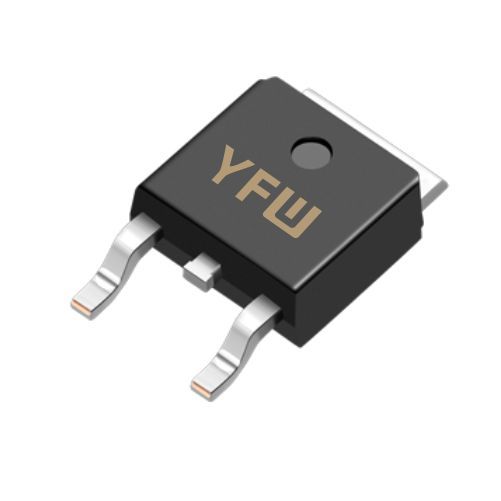Parallel configuration offers two primary advantages:
Higher Surge Current Handling: By distributing transient currents across multiple diodes, parallel connections increase the overall surge capacity. For example, a single TVS diode rated for 500W might be insufficient for a 1500W application. Using three identical diodes in parallel effectively triples the power handling capability, ensuring each device shares the load .
Extended Voltage Protection Range: Combining TVS diodes with different breakdown voltages allows protection across a broader voltage spectrum. This is particularly useful in dynamic systems where voltage levels fluctuate widely .
While parallel TVS diodes offer benefits, they introduce challenges that must be addressed:
All TVS diodes in parallel must have closely matched breakdown voltages (VBR) and clamping voltages (VC). Even minor variations can cause uneven current distribution, where the diode with the lowest VBR conducts first and absorbs most of the surge current. This imbalance may lead to premature failure of the weakest device . To mitigate this, select diodes from the same manufacturer and production batch, or perform pre-testing to ensure tight parameter matching.
Parallel configurations generate more heat due to increased current flow. Inadequate thermal dissipation can cause thermal runaway, where rising temperatures degrade diode performance and reliability. Choose TVS diodes with robust thermal characteristics (e.g., YFW’s SMAJ series, which features high-temperature soldering capabilities up to 260°C ) and ensure proper PCB layout with sufficient copper traces or heat sinks.
The physical arrangement of diodes affects current sharing. Place diodes symmetrically around the protected node to minimize inductive differences in lead lengths. A star topology, where all diodes connect directly to a common point, helps equalize impedance and prevent one diode from carrying excessive current .
To account for potential mismatches, overdesign the parallel configuration by adding 10–20% more diodes than theoretically required. For example, a 1000A surge might require six diodes instead of five to ensure safe operation .
YFW’s TVS diode portfolio, including the SMAJ and SMBJ series, is engineered for parallel applications. These devices feature:
Low Leakage Current: Ensures minimal power loss during normal operation (e.g., SMAJ51A with 1μA leakage ).
Fast Response Time: Picosecond-level avalanche breakdown for immediate surge clamping .
Bidirectional Options: Models like 5.0SMDJ75CA provide protection against both positive and negative transients, ideal for AC circuits .
For example, in automotive power systems, paralleling YFW’s 1SMAxxAT3G series (e.g., 1SMA16CAT3G) can protect against inductive load switching and voltage spikes, ensuring compliance with industry standards like IEC 61000-4-5 .
Parallel operation is unnecessary for low-power applications or when a single TVS diode adequately meets the surge requirements. Additionally, complex layouts with excessive parallel diodes may increase costs and board space, offsetting the benefits.
TVS diodes can indeed be used in parallel to enhance surge protection, provided designers prioritize voltage matching, thermal management, and proper circuit layout. YFW’s high-quality TVS diodes, such as the SMAJ and SMBJ series, offer the reliability and performance needed for robust parallel configurations. By following best practices and leveraging YFW’s advanced semiconductor solutions, engineers can create cost-effective, high-reliability protection systems for diverse applications.
